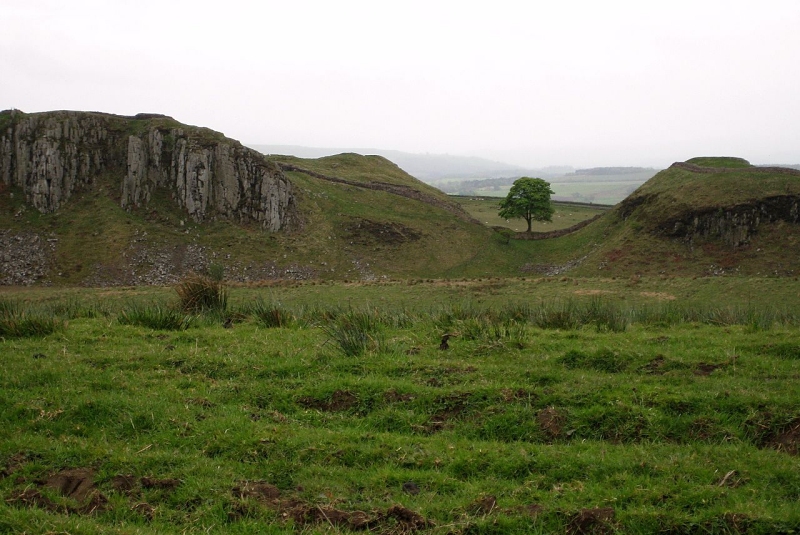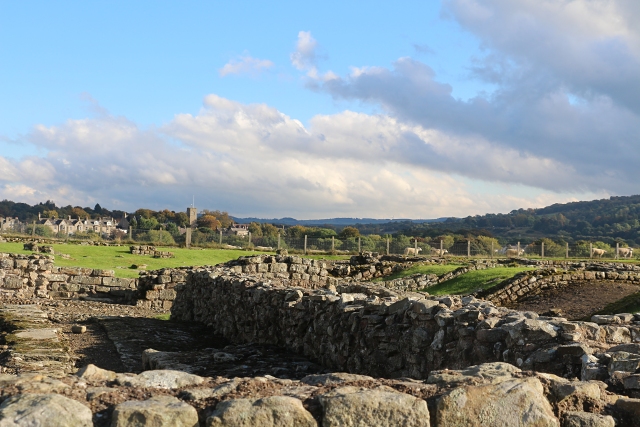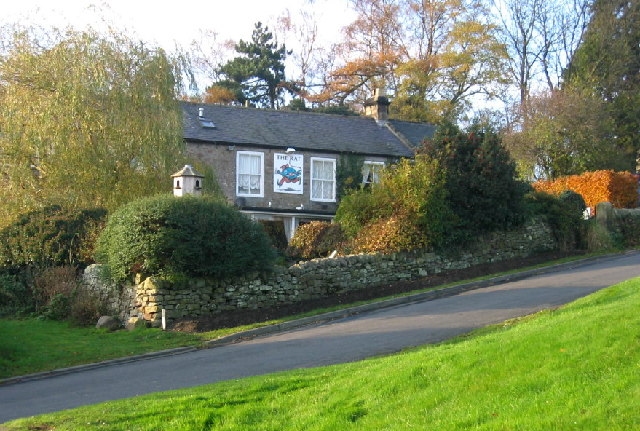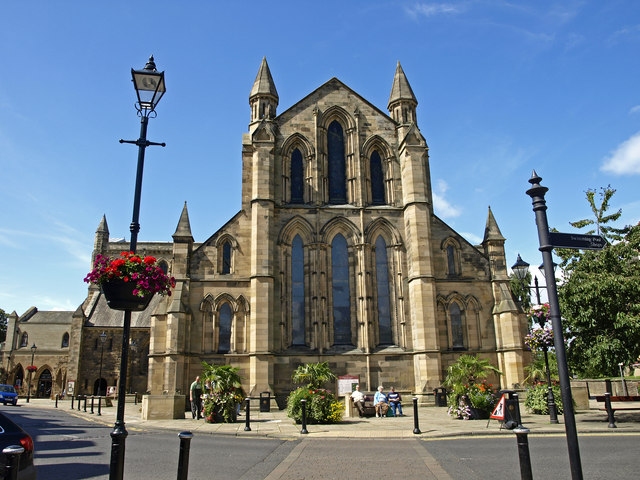
I sit back and watch the rugged scenery as we head inexorably west. We're traveling through Hadrian's Wall country again, paralleling the wall, which has become like an old friend now.
We pass the Roman fort of Corbridge; the ruins are spread out upon terraces, and I crane my neck as we pass by. Corbridge (Corstopitum) was one of the first of the forts to be excavated, between 1906 and 1914.
One of the most important forts in Hadrian's frontier system, the full extent of the site is still unknown. These ruins look as extensive as Vindolanda and I know there is another museum at this major military base, but sights further west and south call us, so we continue on.
Ahead on the right is a "pick your own" strawberry patch. We don't pick our own, but do purchase a small basket of berries. This is not a pint, nor a quart – as we would buy them at our local "pick your own" patches – but a punnet, a small basket brimming with round, ripe strawberries.
We take a look around this small rural market which is full of fresh and unusual items. Here there is smoked pheasant and game pie, large rounds of cheeses and bottles of ales from microbreweries in the area. I assemble an imaginary meal of these items, and in my mind, return to the top of Walltown Crags for a picnic.
It's afternoon now, and though my full-cooked breakfast is once again serving me well, I've developed a thirst – perhaps brought about by sight of all of those microbrews back at the market. Near Acomb we turn into a narrow lane, and up a hill we go, pulling into the car park of the peculiarly named "The Rat".
The walkway to the entry door of this pub is canopied by a rose trellis which is laden with fragrant blossoms. Stepping inside and up to the bar, which appears to be a refinished and refurbished antique sideboard, I take a look around and mentally exclaim, "Ah-ha!". The Rat must certainly refer to a packrat, for this pub is covered, just absolutely full of strange and unusual items.
We sit at a small table in a sunroom which is an addition to the main room of the pub. Where the two rooms meet ivy has snaked its way in between the joining and has been allowed to grow over the walls and ceilings. I sit nursing a half-pint of a carelessly chosen lager (the name of which escapes me) and in great amusement take in all of the marvelous miscellanea that adorns the walls, window ledges and ceiling. Here there is a dart board, there there is a brass bird cage with a brightly colored stuffed parrot, here there are a collection of timeworn beer steins. We pronounce this a "proper pub" and are soon on our way.
We pass by Hexham Abbey, established in 1113 on the site of St. Wilfrid's Saxon monastery. In the post-Norman era, Northumberland monasteries were at the mercy of raiding Scots and never developed the prestige and wealth of the great Yorkshire monasteries, but from a distance, this looks to be a lovely and well cared for abbey. Near this area we also spy the lone tree that is featured as a meeting place in Kevin Costner's Robin Hood film, tucked into a depression between two hills.

Coria was a fort and town 2.5 miles south of Hadrian's Wall, in the Roman province of Britannia at a point where the Roman north–south road, Dere Street, bridged the River Tyne and met another Roman road, Stanegate, which ran east–west. The full Latin name is uncertain. In English, it is known as Corchester or Corbridge Roman Site as it sits on the edge of the village of Corbridge in the English county of Northumberland.
Read more about Corbridge Roman Site at Wikipedia.

Acomb is a village in the south of Northumberland, England, north of Hexham. The name is Anglo-Saxon Old English acum, 'at the oak trees'. The traditional pronunciation of the name is "Yeckam".
Read more about Acomb at Wikipedia.

Hexham Abbey is a place of Christian worship dedicated to St Andrew, in the town of Hexham, Northumberland, in northeast England. Originally built in AD 674, the Abbey was built up during the 12th century into its current form, with additions around the turn of the 20th century. Since the Dissolution of the Monasteries in 1537, the Abbey has been the parish church of Hexham.
Read more about Hexham Abbey at Wikipedia.